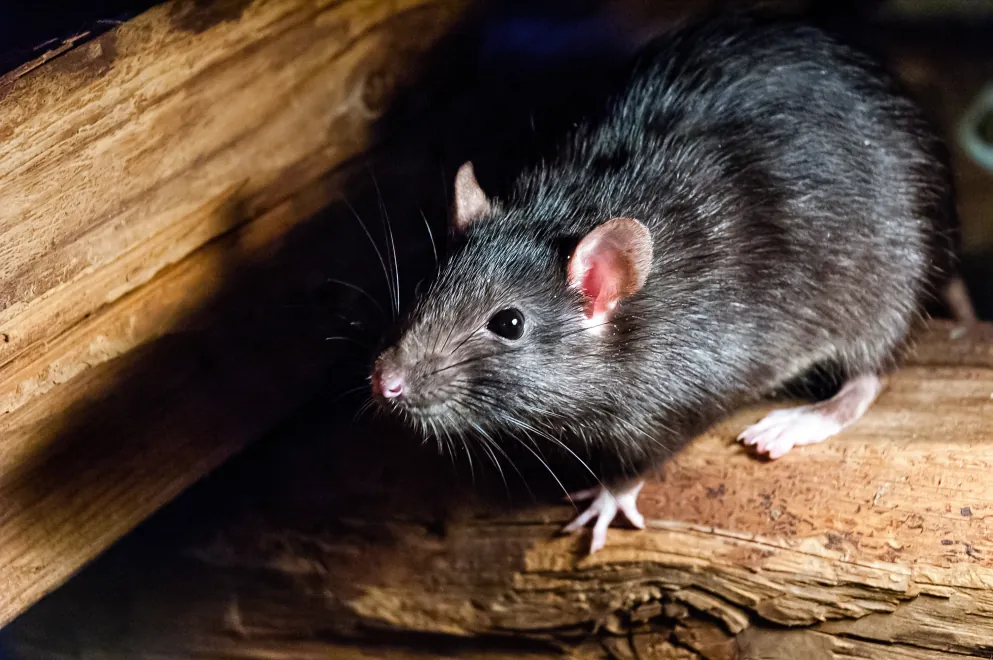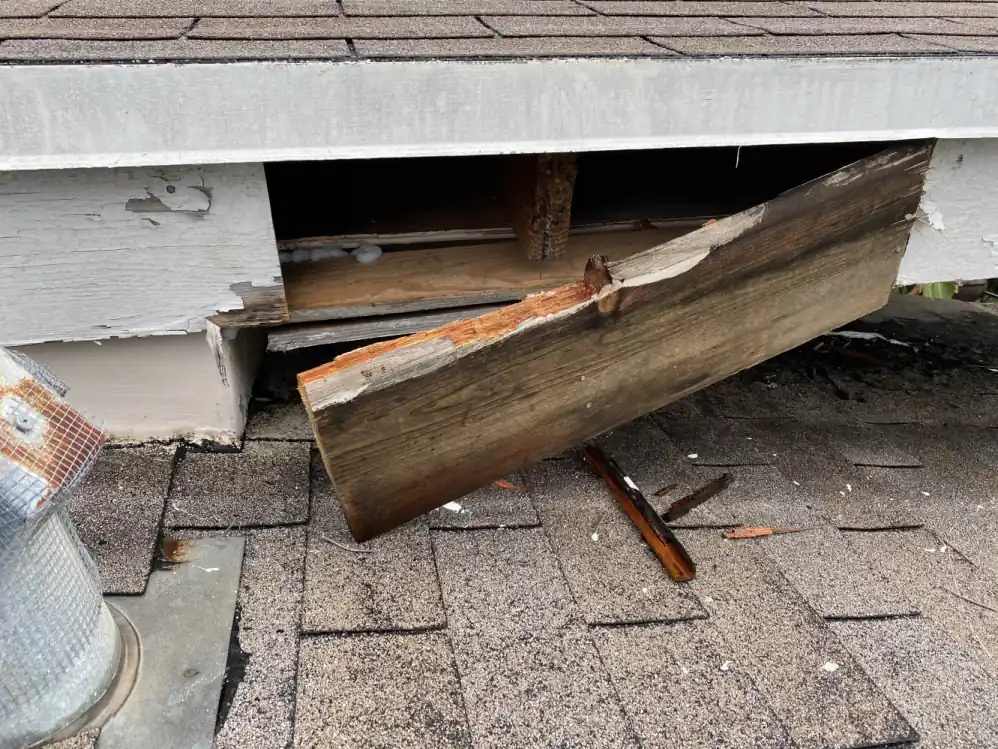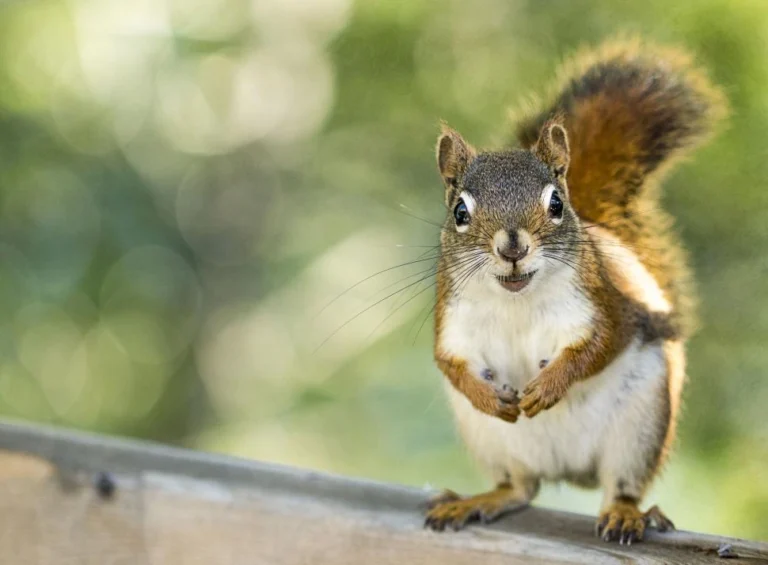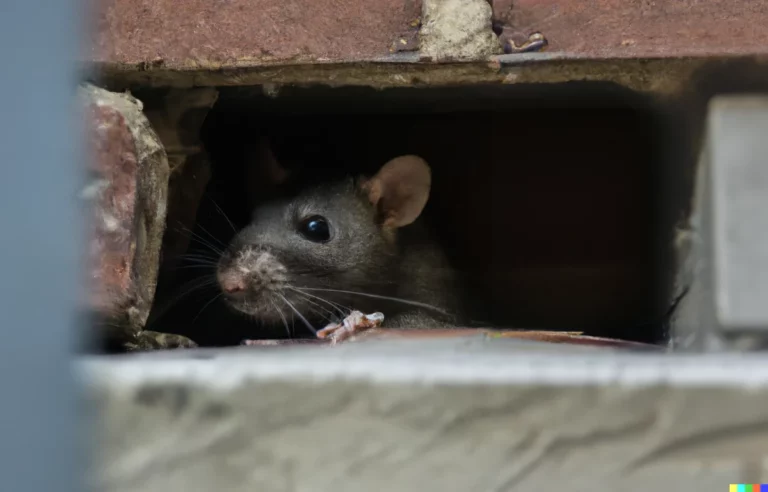Table of Contents
ToggleWhat animal is in my ceiling or attic?
Hearing noises in ceiling? Rats, mice, squirrels, raccoons, skunks, bats, opossums, and birds are among the most common culprits in this kind of situation. Scratching noises coming from your walls or ceiling is a solid indicator that an animal has made its way into your house. It could be a wild critter trapped inside, unable to get out. It could also possibly be rats and mice looking for a new place to call home. The insulation, cables, and other components in the attic are at risk of damaged by the presence of these animals.
Squeaks and other noises made by these animals will aid to identify them. Knowing this information will help homeowners and exterminators choose a pest control approach that works best for their particular situation. An important cue is the time of day when you first hear it. Squirrels are often the source of daytime noises. Raccoons, rats, or other nocturnal animals may be making noise in the attic at night. Keep reading to learn what type of animal may be living in your attic.
Rats Or Mice
Hearing scratching in walls and ceiling at night? Does it sound like scampering by something fast and light? It’s likely a rat or mouse. Soon after sundown, it is not uncommon to hear the scurrying of rats and mice in the ceiling or wall cavities. Instead of clawing or squeaking, you’ll probably only hear them racing and scampering.
Raccoons or Possums
What about the sound volume? Loud noises like walking and banging around are characteristic of larger animals like raccoons or opossums. Even though possums (also known as opossums) are completely silent, you might still hear them stomping around your attic if they happen to be living there. Raccoons are nocturnal animals that can occasionally be heard during the day. Raccoons in the attic are easily spotted by the sounds they make, which include stomping, banging, squeaking, and babbling from the baby raccoons.
Bats
When bats move inside your home, they may make a faint chirping sound at dusk, but otherwise they are nearly silent. Bats rarely live in isolation; they tend to form colonies with anywhere from one dozen to more than 1,000 members.
Flying Squirrels
The flying squirrel is distinct from its terrestrial cousin in that it is active at night. Though they make a rat-like noise in their attic nests, they are much less likely to be heard in walls than either rats or mice.
What to do about noises in ceiling or attic?

Identify Which Animal Makes the Sound
First, you need to figure out if an animal or a loose piece of your home is creating the scratching noise. An animal is unlikely to have created the noise if it occurs at consistent intervals. Observe the exterior for any siding or guttering that may have become dislodged during a storm.
Raccoons and other nocturnal creatures are more likely to produce sporadic noises. Having established that the mysterious noise is not the result of a leaking pipe or other structural issue, you should contact On Demand Pest Control to schedule a free inspection, otherwise keep reading for steps you can take personally.
There are a variety of critters in the attic that make distinct noises. The kind of noise, the volume, and the frequency of the sound might help you identify the pest. However, without any other information, it’s impossible to precisely establish which species is nesting in the attic.
You may try looking for other clues to their identity if they’re not in the attic every time you check. We can identify the animal in attic scratching at night by the size and form of their droppings.
Eliminate the Pest in the Attic
It’s time to bring in pest control to get rid of the animals making sounds in your attic, after you’ve determined what sort they are. It’s possible to save money by doing your own exclusion work in your home, but it’s preferable to leave the job to the professionals.
Professional exterminators have the proper equipment and training to clear your attic of any unwanted guests. This may allow exclusion work that is safe for the family and the environment to be carried out.
It’s not as simple as just opening a door and letting the scratching nuisance outside to go away. Here are the measures you can take to exterminate the furry, four-legged intruders from your home:
- People still commonly trap mice and rats, but not all traps are equal. To locate the nest, professional rodent-control services may employ either live traps or non-lethal baiting strategies, depending on the circumstances.
- Bait traps containing pellets or putties designed to kill rodents are commonly used. However, animals and children under the age of 12 should be kept away from these traps. The Environmental Protection Agency (EPA) and individual state agencies control all pesticides.
Clean, Seal, and Prevent Future Infestations

Seal All Roof Holes
After exterminating the pests and cleaning out the nests, it’s time to check the house for possible animal entry points. Fill in the holes in the wall with steel wool and caulk to keep rodents away.
Repairing the holes in the roof and the gaps in the walls reduces the risk of various animals becoming trapped in the attic. Mice can squeeze through a hole as wide as a pencil’s width (1/4 in).
The best places to check for holes and cracks in your house are:
- behind, below, and inside kitchen cabinets
- particularly corners on the floor of closets
- by the fireplace
- around doors and windows
- behind equipment
- around the pipes in front of washing machines and sinks
- within the vicinity of the pipes going to furnaces and hot water heaters
- between the dryer and floor air vents
- Around all gas, water, electric, and sewer lines
- Attic interior
- Around floor drains, such as those in your basement or laundry room, in the basement or crawl space
- in the space where the floor and wall meet
Points outside your house to inspect for cracks or holes:
- In the rafters, eaves, soffits, and gables of the roof.
- Close to windows and doorways , especially without weather strips
- Around vents in the attic and crawl space between the home’s foundation and the ground
- Around holes for cable, gas, electrical, and plumbing lines
Throw Away the Nesting Materials
The process still isn’t finished after the animals have been exterminated/eradicated. Disinfecting the space and removing any nesting materials are also critical. Decontamination is usually included in the services of pest control companies, so homeowners do not have to worry about how to properly dispose of nesting materials.
After removing the source of the scratching sounds from their attic, homeowners should dispose of any nesting materials they found. Make careful to use complete protective gear when cleaning out the nests, since their droppings and urine may still pollute the home and spread illness.
Trim Trees Near the Attic
Tall trees often touch your home’s roof and attic, giving many animals access. Long branches serve as a means of transportation as they cross the roof in search of an opening. For those who don’t want to cut down the tall trees in their yard, it’s important to trim the branches coming into contact with the roof.
Other Preventative Measures
There are a few easy things we can do around our homes to make them less appealing targets for wild animals:
- Do not create stagnant puddles around your home. The water source is a welcome mat for any passing wildlife. Insects use it as a nursery, too. Avoid the presence of standing water.
- Don’t let trash and food waste accumulate and get in the way. If you leave food out for animals, don’t be surprised if they come inside your house to find it.
- Make sure to support and fix any weak spots you find. Seal off any exterior points of access as thoroughly as possible before a wildlife problem arises.The problem becomes a lot more difficult to fix when living creatures become mixed into the situation.
While the aforementioned measures can help lessen the likelihood of an animal in attic at night, it’s important to keep in mind that even if you take every precaution, these creatures are highly agile and resourceful. There’s likely not much we can do to stop them from entering your home through the attic in the first place.
Hence, we at On Demand Pest Control strongly advise you to make use of our rodent monitoring service. These rodent-proof containers are suitable for use around children and pets and will prevent pests from entering your attic.
With sturdy construction and easy-to-use design, bait boxes are perfect for keeping pesky rodents away from your home. The secure latching system ensures that bait stays safely in the box. Call us today to get your rodent bait box installed and start pest-proofing your home!
Hire Professional Help from On Demand Pest Control
Get A Full Attic & Home Inspection for FREE by On Demand Pest Control. On Demand is a South Florida based pest control company that specializes in providing safe and effective wildlife removal. In order to provide the best pest control services possible, our highly-trained staff treats pest control as a scientific endeavor.
Call us today for a free inspection and no-obligation estimate. We’ll be able to get rid of the animals in your attic that are making scratching noises.




